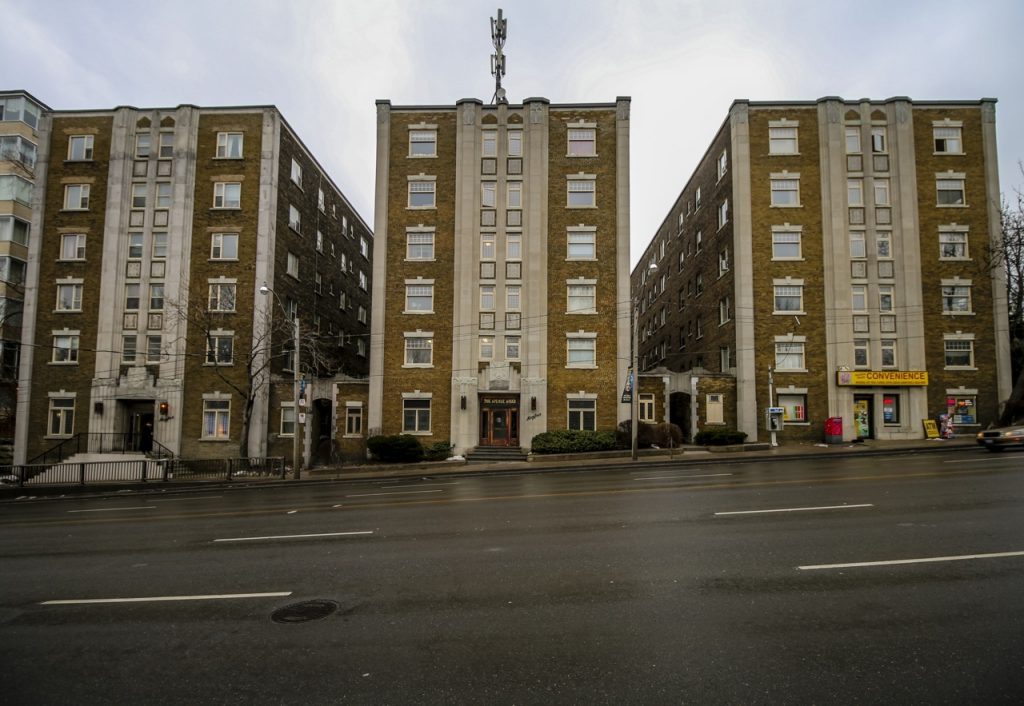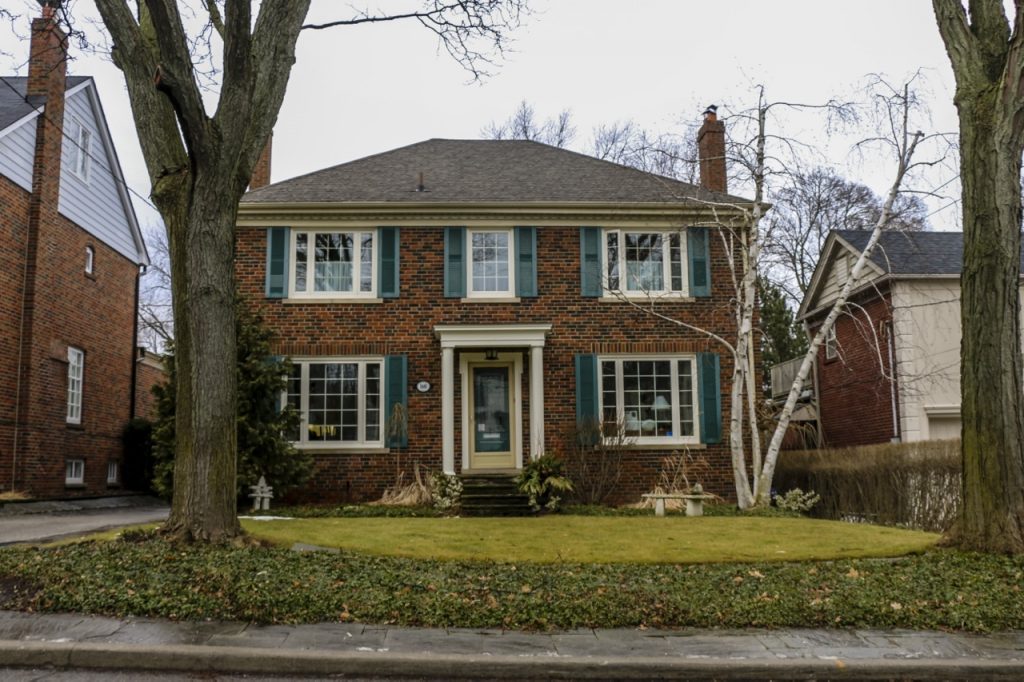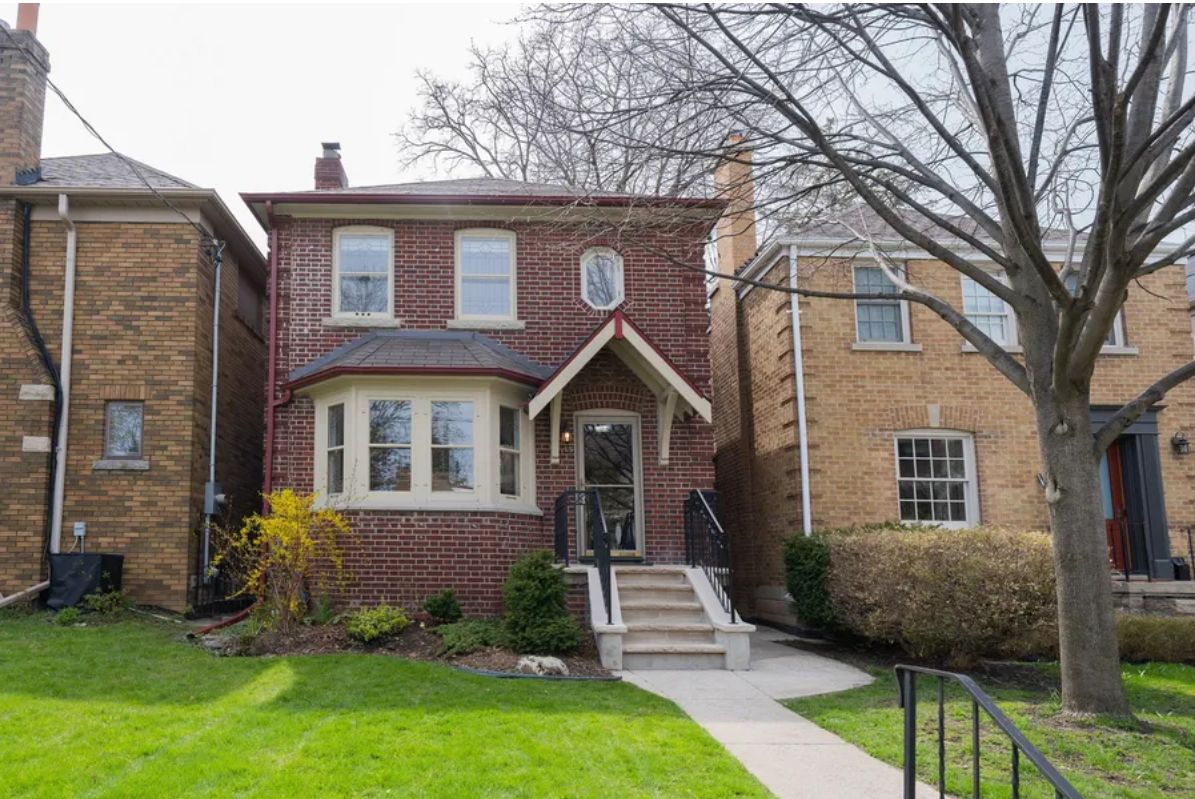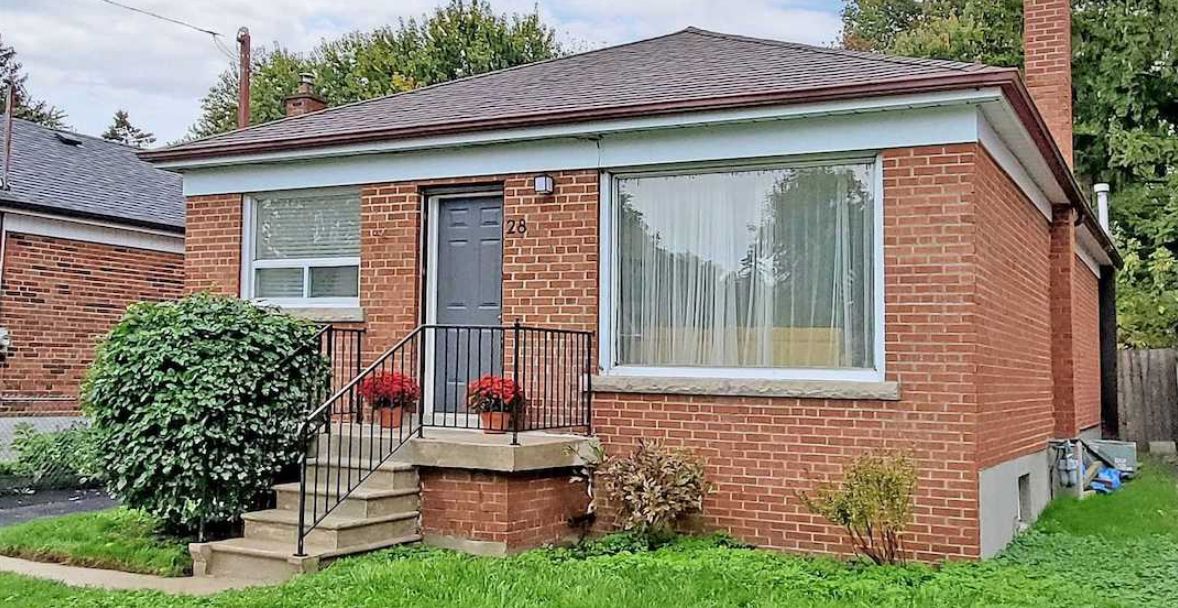We’ve covered Victorian architecture styles before, focusing on home and hearth in 19th century Toronto. The first part of the 20th century was, in large part, a reaction to the popular designs that came before it, focusing more on simple styles instead of gaudy embellishments.
Here are some of the most popular home styles you’ll see in neighbourhoods built up between the 1900s and 1940s (photos by James Bombales).
Enjoy!
Georgian Revival
History: A throwback to the styles of Georgian England, dating from 1715 to 1830, this style focuses on symmetry and takes its inspiration from classical times. In North America, the style was revived at the beginning of the 20th century.
Habitat: The Kingsway, Rosedale, Forest Hill, Leaside, Lawrence Park,
Defining features: Common among the upper and middle classes, neo-Georgian tends to feature columns, brick, stone or clapboard exteriors and wood shutters. The front door is typically centred and the main focal point of the exterior.
Tudor Revival

Habitat: The Kingsway, Rosedale, Forest Hill, Casa Loma, Old Mill, Lawrence Park, Leaside, Moore Park, Allenby, The Beaches, Cliffside
History: This style of architecture takes its cues from the time of Henry VII in the late 1400s. The half-timbered houses featured stone or brick foundations.
Defining features: A reaction against more ornate Victorian housing, Tudor-style homes were meant to look rustic, like English cottages. The homes feature steeply pitched roofs, half-timbering, casement windows and often herringbone brickwork. It’s often seen in neighbourhoods with homes built between 1900 and 1940.
Art Deco

Background: Inspired by Cubism, the style started off in France after WWI but became popular in the United States in the 1920s. The visual arts movement, which can also be seen in everything from everything from jewelry to furniture to typefaces, petered out after WWII.
Habitat: Though commonly used for Toronto office towers and theatres built in the interwar years, there are a number of Art Deco apartment buildings in the city, especially around Midtown Toronto. Frequently mid-rise, these apartments can be found around Forest Hill, South Hill, Summer Hill, Bayview as well as parts of Parkdale.
Defining Features: The modernist style embraced streamlined shapes, vertical projections, and angular and geometric patterns in the facades. Though it celebrated the machine age with the use of sleek materials, it also took inspiration from ancient Egypt (look for the ziggurats, the pyramid-like tiered shapes that topped many an art deco skyscraper).
Arts and Crafts
Background: The movement got its start in Britain and found a champion in Toronto through the architect Eden Smith in the 1900s (his home is pictured above). A rejection of Victorian ostentation, the style stressed simplicity and function and many homes were planned from the inside out, with a focus on comfort.
Habitat: Wychwood Park, High Park, Bloor West Village, Lawrence Park.
Defining Features: A number of Arts and Crafts homes in the city have side entrances, allowing for more windows and light from the street. Inside, there were frequently large principle rooms and exposed beams and rafters. The style is all about handicrafts and natural elements like wood or slate shingles on the roofs and roughcast facades.
Bungalow
Background: Though the style came to Canada by way of California in the early 20th century, the term bungalow traces its roots to colonial India. Colonial Brits adopted the term “bangala” from a Hindi word that was used to refer to a house in the Bengal style. In Britain, bungalow ended up being being applied to cozier, cottage-like homes. The Craftsman version of the style isn’t just limited to one-storey houses, as the term is more commonly used today.
Habitat: The Beaches, Upper Beach, Riverdale, North Toronto, The Danforth, High Park and many streets built in the 1920s.
Defining features: The homes’ defining feature is its low sloping, overhanging roof. Other key features include a large, open porch or veranda with supporting columns. A number of the Toronto bungalows from this era that feature more than one level have dormer windows.
Edwardian Four Square
Background: Also known as American Four Square, the style started up in the last years of the 1890s and remained popular until about the 1930s. A reaction against the fuss and frippery of the Victorian era, many of these basic houses were built from mail order home-building guides sold by Sears.
Habitat: High Park, Riverdale, Roncesvalles, the Annex, Midtown, the Beaches, the Junction. The style is very common in the city’s streetcar suburbs.
Defining features: These simple, boxy dwellings get their name from their layout, which features rooms laid out in a set of four squares on each floor. Porches are common, and the homes used the maximum amount of space possible with many featuring big attics that were used as living space.
Read the full post in BuzzBuzzHome












